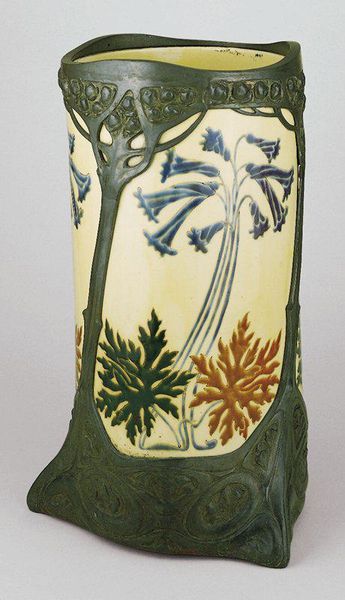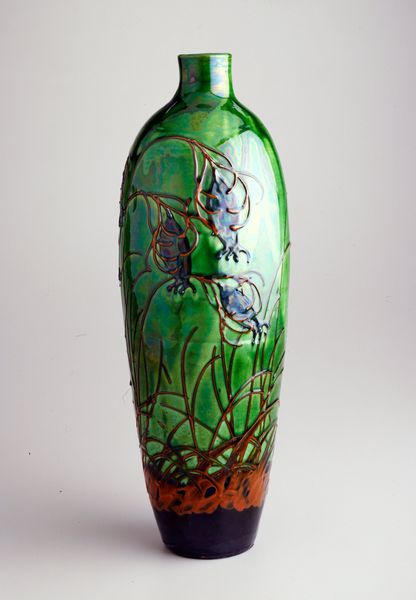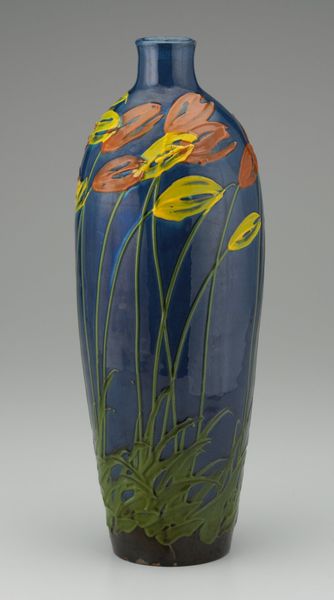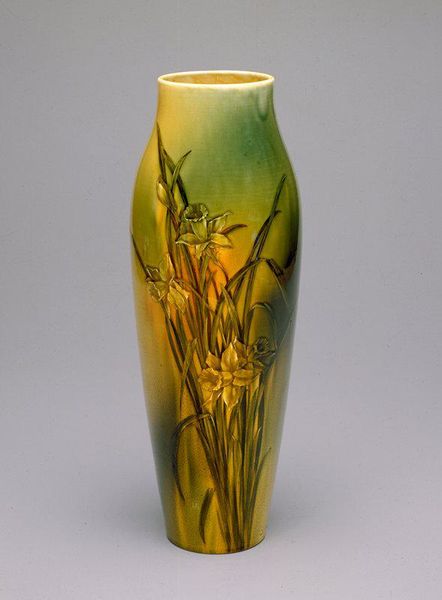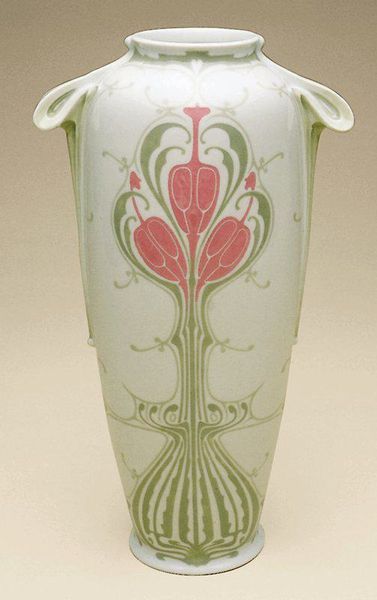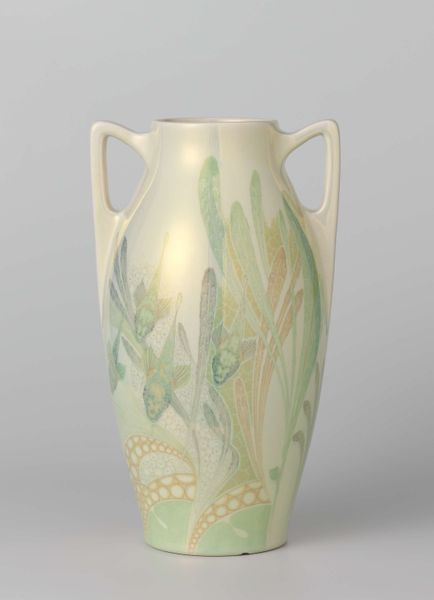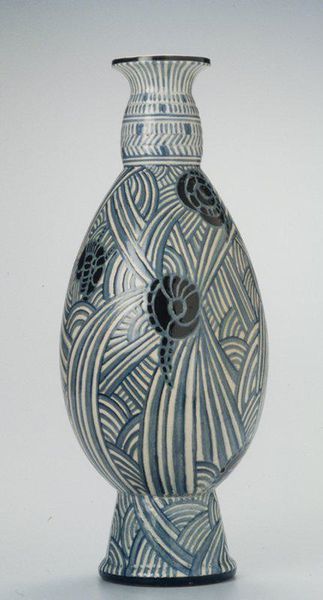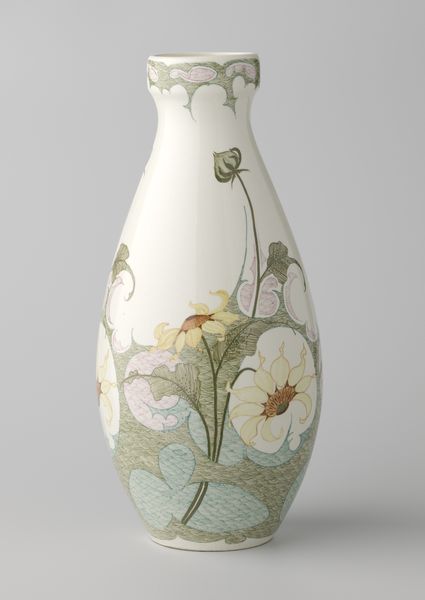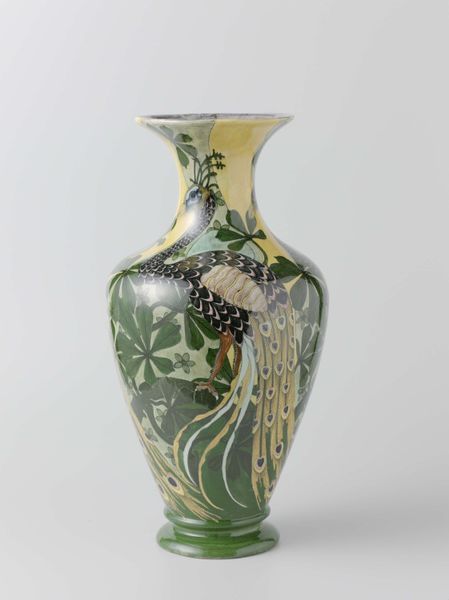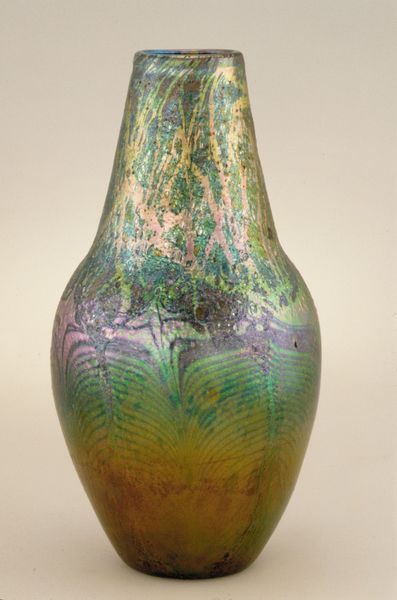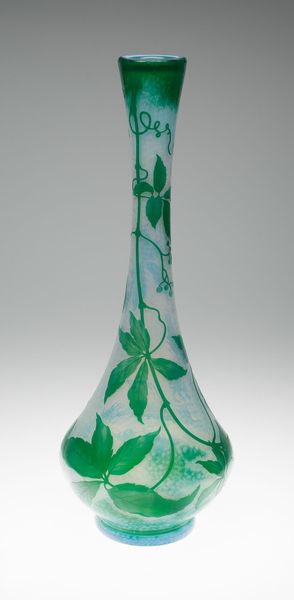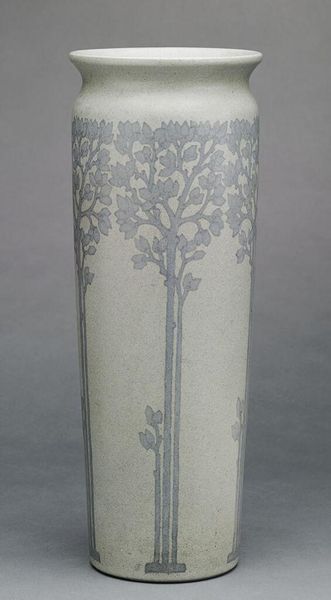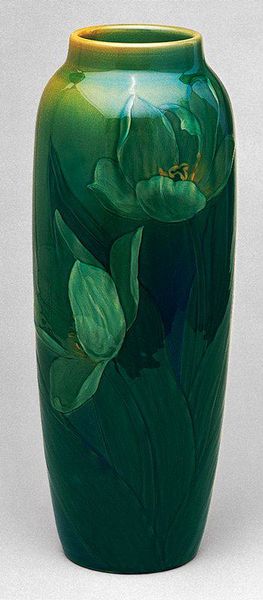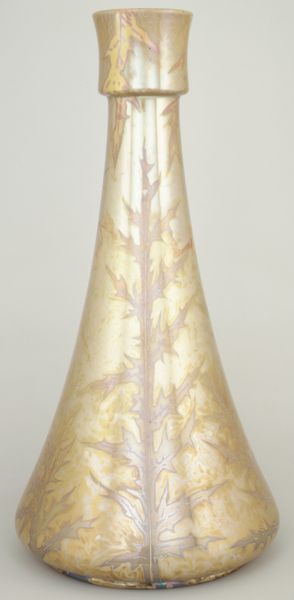
ceramic, earthenware
#
organic
#
art-nouveau
#
decorative element
#
ceramic
#
form
#
earthenware
#
ceramic
#
decorative-art
Dimensions: 22 3/4 x 13 in. (57.79 x 33.02 cm)
Copyright: No Copyright - United States
Curator: Immediately, I see something like quiet, mossy magic. What a gorgeous, subtle green! Editor: Indeed. This is the "Covered Vase" created by Josef Ekberg in 1899. It’s currently housed here at the Minneapolis Institute of Art. Notice the stylized floral and organic motifs rendered in earthenware with such deliberate form. Curator: Oh, the plant-like abstractions feel so much like exhaling after a very long day! Is that the Art Nouveau influence at play, this desire for... deceleration? Editor: Precisely. Art Nouveau consciously rejected industrial harshness, opting instead for the organic. Observe Ekberg’s precise contrast between the slightly raised darker elements and the recessive light green ground. The strategic mirroring throughout gives the whole vase this wonderful visual symmetry, creating this harmonious balance. Curator: You’re right, the symmetry is really quite clever. There’s a disciplined elegance amidst the very flowing natural shapes. Almost a dialogue, wouldn't you say, between control and freedom? What does the shape "contain" besides air? Editor: That's a delicious reading of the piece! There’s certainly an intended sense of preciousness to the whole construction and form. Ekberg balances the utilitarian purpose of a vase with high aesthetic considerations. It is, through all its elegant design elements, foremost an object. The artist, Ekberg, through this tension between form and organic theme evokes in the viewer contemplation beyond immediate appearance. Curator: Contemplation and a lovely feeling of rightness. I feel myself breathing a bit deeper, which I suppose, after all, is exactly what I expect great art to do. Editor: It is indeed, a truly immersive experience, don't you agree?
Comments
minneapolisinstituteofart almost 2 years ago
⋮
Gustavsberg was founded in 1827, and by the year 1900 employed 900 workers producing great quantities of parian ware, porcelain, faience and stoneware. From 1897-1908, under artistic director Gunnar Wennerberg, the firm developed a simplified organic style with sgraffito decoration often seen on large vases and urns. Sgraffito, a technique that originated in China along with the classic ginger jar shape seen here, involves overlaying a clay pot with a slip in a contrasting color. Designs are then scraped into the surace, revealing the color underneath and creating a raised pattern when the vessel is fired. The ambitiousness of Gustavsberg's works helped the firm win a gold medal at the Paris World's Fair of 1900. Wennerberg, who had studied at Sèvres outside Paris, introduced the French Art Nouveau decorative style to Gustavsberg. His pupil, the painter Josef Ekberg, created this monumental vase with an abstracted naturalistic design. Compared to the typical French Art Nouveau, which would abstract flora and fauna beyond identification, closer inspection reveals a strong resemblance to a real flower, most likely an allium. This distinction sets Ekberg's work apart and makes this vase an intriguing example of the stylistic changes underway at the turn of the century. [Art Nouveau]
Join the conversation
Join millions of artists and users on Artera today and experience the ultimate creative platform.
